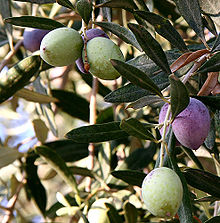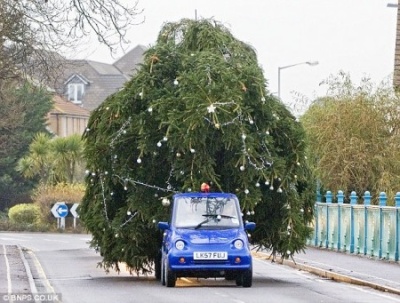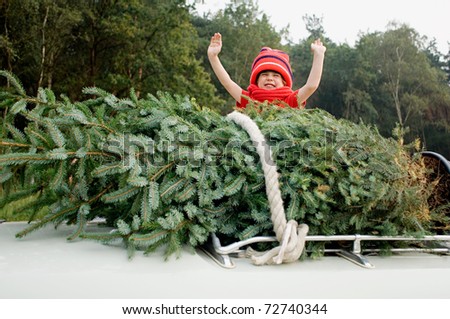Some Christmas trees are sunk in lakes to act as habitat for bass. In the picture below, members of the Army Corps of Engineers is preparing to sink donated trees using cinder blocks.
If you'd like to enhance your own backyard habitat, prop your tree up using a makeshift stand or by sinking it into the ground or alternatively, you can just lay it directly on the ground. Birds will use the limbs (with or without needles) as shelter and if you have bird feeders, you may find an increase in your visitors thanks to the extra shelter and safety from predators you have provided.
A female house sparrow enjoying her new Christmas tree perch
(and yes my fellow ornithologists, I know it's an invasive species, but it's the only applicable picture I could find)
(and yes my fellow ornithologists, I know it's an invasive species, but it's the only applicable picture I could find)
Donated trees are used not just to create habitats, but to protect them as well. A barricade of Christmas trees can act as an effective means of protecting areas such as shorelines and sand dunes from erosion.
That's right little penguin-thingy, just kill the tree
and keep telling yourself that everything will be ok.
There are many other ways to put that old Christmas tree to use, and many will be specific to the area in which you live. In order to find out your local options, just do a Google search for "Christmas tree recycling" and the name of your city. If you are served by Waste Management Inc. you can visit the website for your local office (enter in your zip code here) and even see if your town does curbside pick up of trees! Whether you are wishing you and Christmas could be together just a little bit longer or if you are so over Christmas, you can give away your tree memento with no emotional baggage attached, knowing it will be put to good use. Just remember, there are other Christmases in the sea and thanks to you, a tree in the lake as well.
















